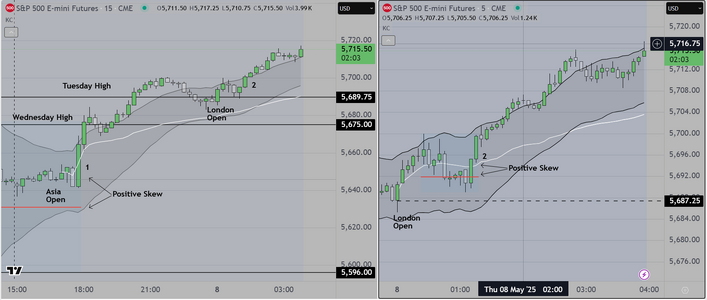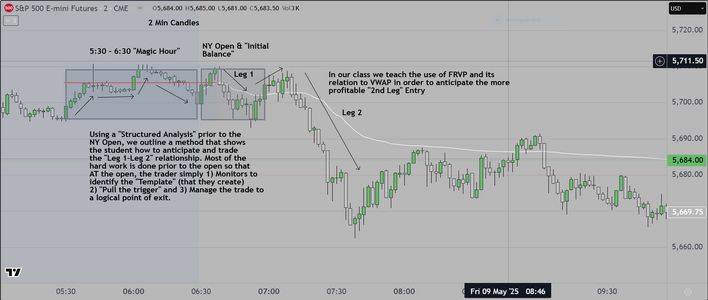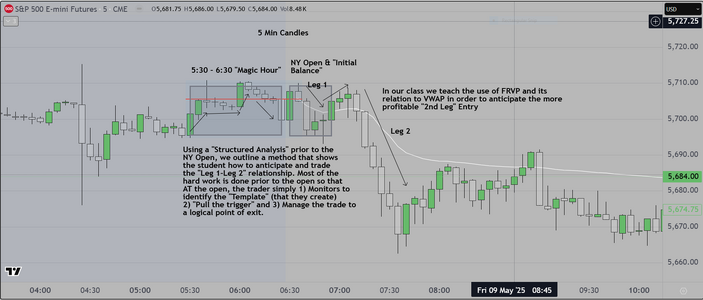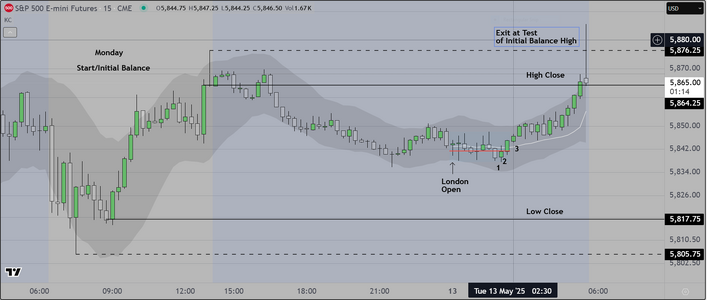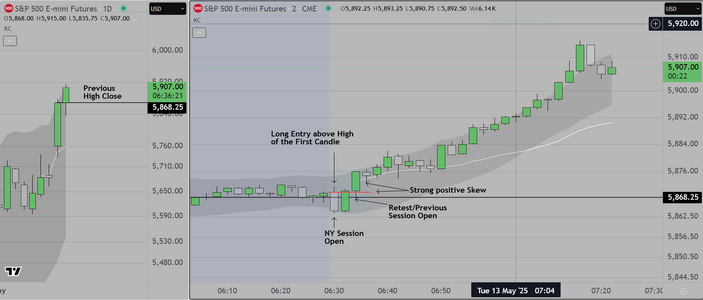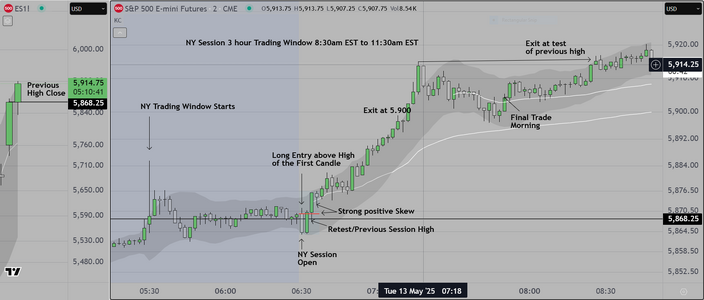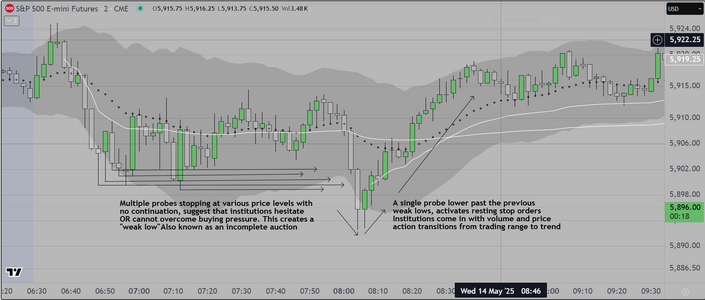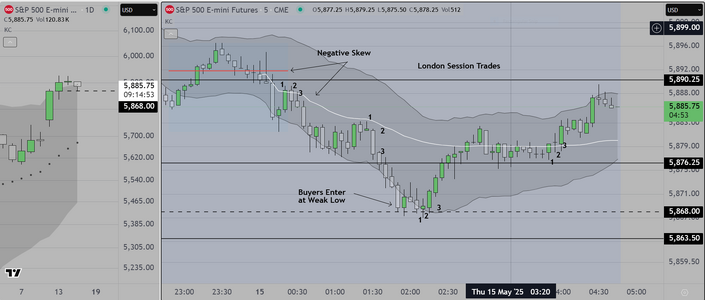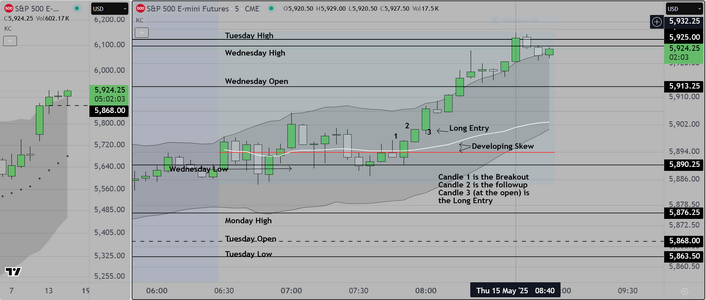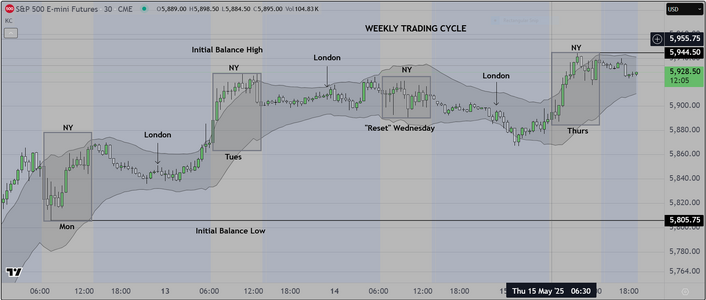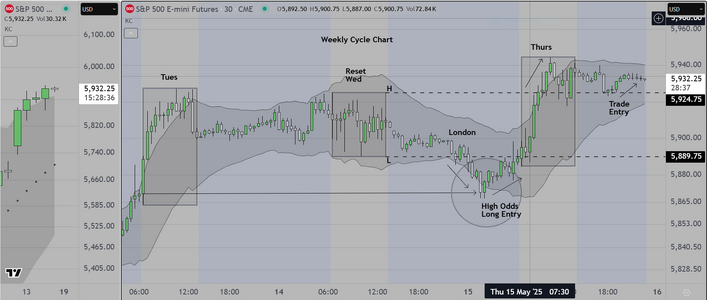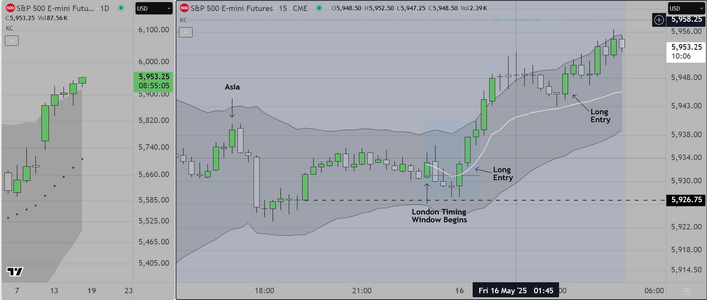I am done for the session and wanted once again to
post this for Trader333
The attached chart shows two (2) views, on the left
using 15 min candles, we show the Asia session as traders
"Lift the offer". For those who may not have the skills, this means
that institutions and professionals alike are buying the asking price
because they are aggressive (they really want to get long). WHY?
Because President Trump promised "Big" deal announcement and
the markets are "buying into" the possibility that he actually HAS
made deals that will reduce the need for tariffs. I am not a big fan
of this person, but what matters is not my politics, but what the big
Asian and Euro banks think, and it was easy to anticipate that this
is what would happen. My strategy was to get long WITH those
institutions and get paid during Asia and London, then to wait to
see what (exactly) the "big" deal is. I won't be trading the NY session.
So far I am up +40
On the right is the 5 min chart showing the London session. Same tools
Same approach, Same result.
Trader333, in terms of success, what really matters is accurate evaluation
of context (news), THEN, can you predict how markets will respond? Any
amateur who wanted to know in advance what might happen, only had
to check out the comments offered by Google's AI engine. It supplied
the information about the probable response to this event yesterday.
Plenty of time to figure out a trading strategy. Used to be that I had to
call "friends" to ask what they thought. No longer necessary.
The display is simple to figure out, the only technically demanding issue
is to learn where to anchor the tools. Once you have that in place, you can
see where the entries are, you get long, you hold to +10 and +20, then as
I have said previously "you get paid and you get out". That is the job.
By the way, this approach works like a charm for any index including FTSE
and DAX.
Good luck
post this for Trader333
The attached chart shows two (2) views, on the left
using 15 min candles, we show the Asia session as traders
"Lift the offer". For those who may not have the skills, this means
that institutions and professionals alike are buying the asking price
because they are aggressive (they really want to get long). WHY?
Because President Trump promised "Big" deal announcement and
the markets are "buying into" the possibility that he actually HAS
made deals that will reduce the need for tariffs. I am not a big fan
of this person, but what matters is not my politics, but what the big
Asian and Euro banks think, and it was easy to anticipate that this
is what would happen. My strategy was to get long WITH those
institutions and get paid during Asia and London, then to wait to
see what (exactly) the "big" deal is. I won't be trading the NY session.
So far I am up +40
On the right is the 5 min chart showing the London session. Same tools
Same approach, Same result.
Trader333, in terms of success, what really matters is accurate evaluation
of context (news), THEN, can you predict how markets will respond? Any
amateur who wanted to know in advance what might happen, only had
to check out the comments offered by Google's AI engine. It supplied
the information about the probable response to this event yesterday.
Plenty of time to figure out a trading strategy. Used to be that I had to
call "friends" to ask what they thought. No longer necessary.
The display is simple to figure out, the only technically demanding issue
is to learn where to anchor the tools. Once you have that in place, you can
see where the entries are, you get long, you hold to +10 and +20, then as
I have said previously "you get paid and you get out". That is the job.
By the way, this approach works like a charm for any index including FTSE
and DAX.
Good luck

